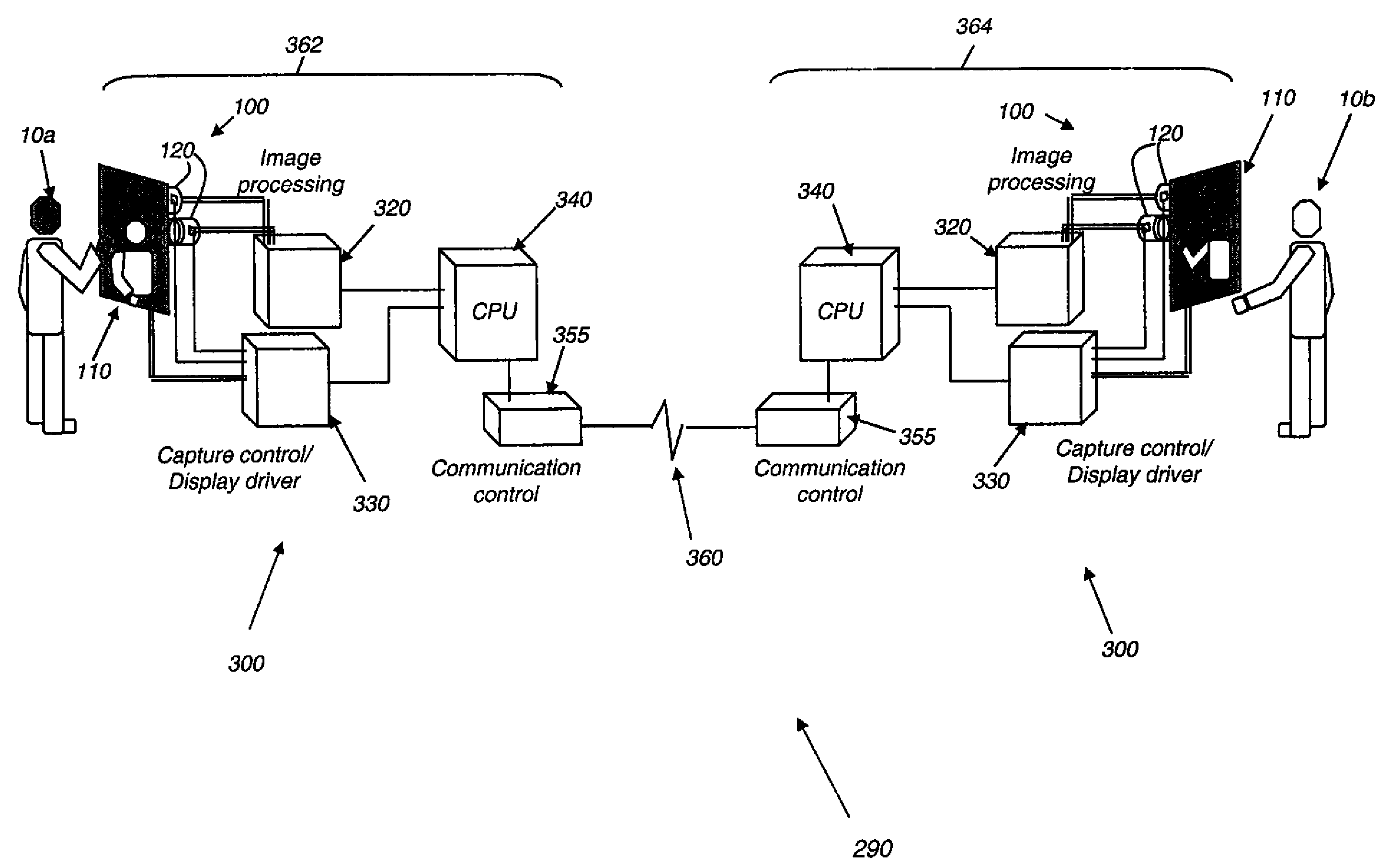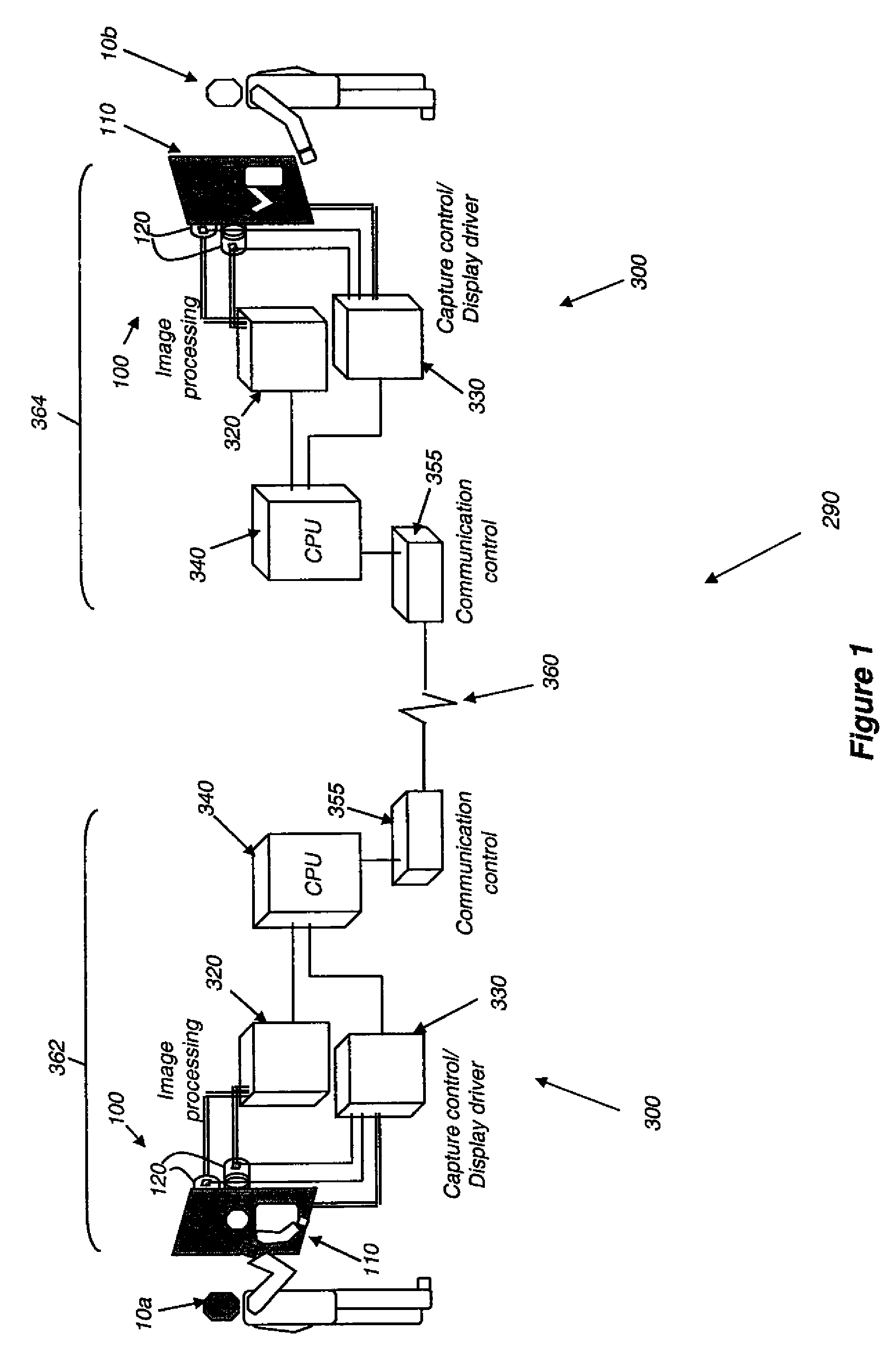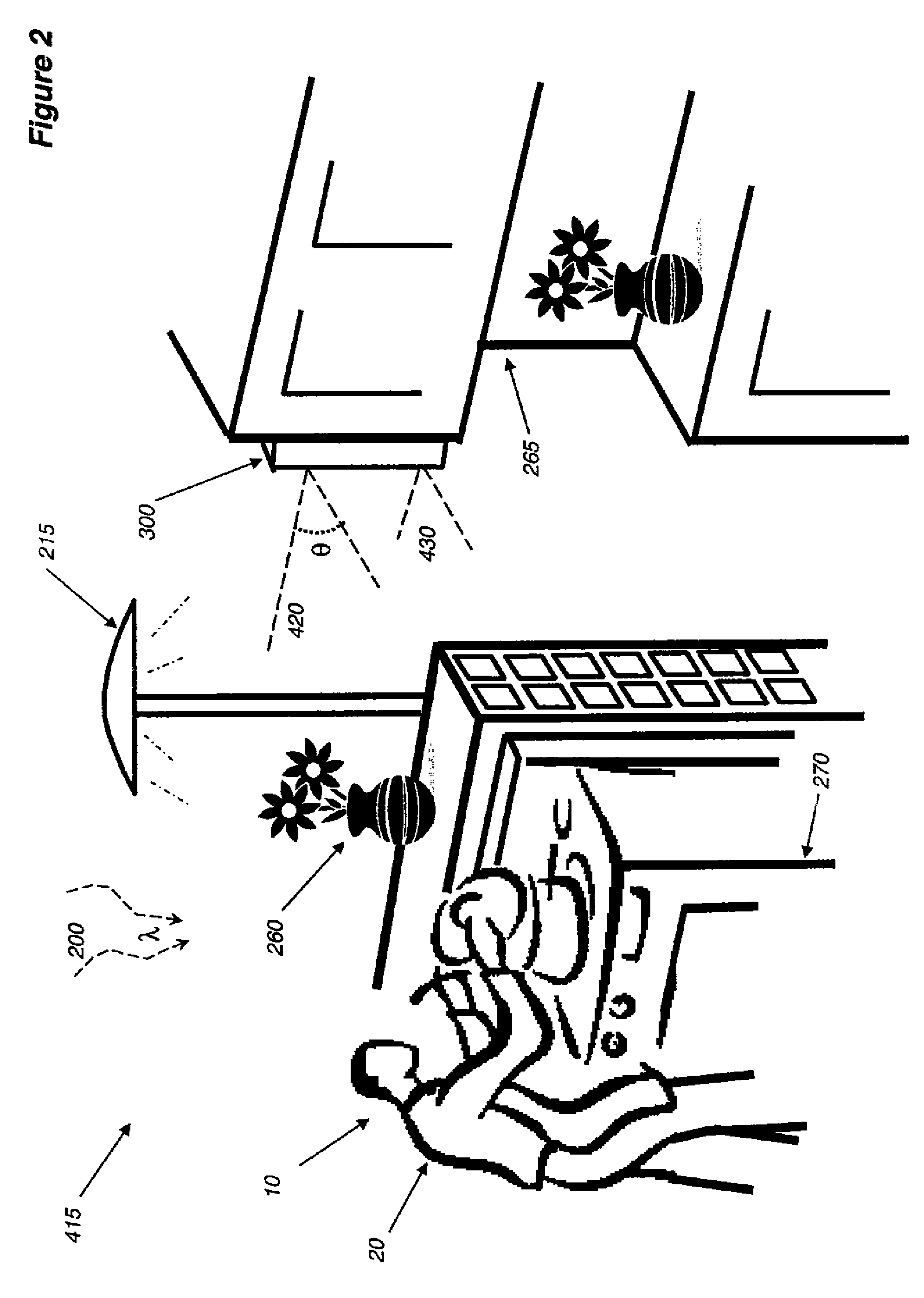However, the Picturephone had very limited commercial success.
Technical issues, including
low resolution, lack of
color imaging, and poor audio-to-video synchronization affected the performance and limited the appeal.
Additionally, the Picturephone imaged a very restricted
field of view, basically amounting to a portrait format image of a participant.
Wile currently many
cell phones include cameras for capturing still images, most
cell phones still lack
live video capture and display capability.
While phone-cameras are easy to use, highly mobile, and have arguably become essential for
modern life, the size and
cost structure constraints limit their applicability for some uses.
While these video-camera-computer systems are enabling internet-based video-
telephony, these technologies have not become ubiquitous like the
cell phone has.
Certainly, the differential increased cost and size are reasons for this.
However, there are many issues related to the user experience with the web-camera that have not yet been adequately addressed.
In particular, these systems are not fully optimized for easy use in dynamic environments, such as the home.
However, the WebEx approach, while useful, does not anticipate the concerns and needs that people have when communicating by video on a personal basis.
However, again there are many aspects of residential video-
telephony, relative to managing privacy and personal context in a dynamic
residential environment that this
system does not anticipate.
In particular, Chim '258 does not provide scene transition analysis and shot framing analysis to switch between shots that are appropriate for video capture of one or more users engaged in informal and unscripted activities within a broad, largely unconstrained, environment.
Thus, while Chim '258 suggests that his
system might be used in a
residential environment, in most respects, the system is really targeted for the corporate
conference room or office environments, as the privacy, contextual interpretation, and video capture management aspects are underdeveloped and insufficient for residential use.
As
image capture occurs in structured environments with known participants behaving in relatively formalized ways, these conference systems are not enabled with capabilities that could be desired in the dynamic personal environments.
The cost of teleconferencing systems is often in excess of $100,000, which is not supportable by the residential market.
For example, the proposed rules for predicting and redirecting image framing to the next speaker would be undesirable in video capture of
chaotic informal activities, where people often interrupt each other.
Likewise, these patents do not consider how to frame shots, identify shot or scene transitions, and execute the resulting shot changes for unscripted events likely involving many people.
Thus, these patents are not sufficiently adaptive to residential dynamics, and the privacy and
context management aspects are also underdeveloped.
Although such systems enabled informal communications as compared to the
conference room setting, these systems were developed for work use, rather than personal use in the
residential environment, and thus do not anticipate residential concerns.
The authors recognize that personal privacy concerns are much more problematic for home users than for office based media spaces.
However, this system was not optimized for personal communications by the residents and does not necessarily provide adequate privacy controls for home users.
Consumer captured images, whether still or video, often have uneven
image quality and artistic characteristics.
This occurs because most consumers are untutored amateur photographers shooting images of unscripted live events.
Although image
quality characteristics can be improved by auto-focus, auto-flash and aperture control, red-eye reduction, and other technologies, artistic inadequacies are harder to address.
However, the artistic portrayal of the characters and scenes is very much affected by the
cinematography.
Certainly, the comparison of
consumer photography to
cinematography is not entirely fair, as the latter benefits from large budgets, tightly scripted events, complete control of one or more cameras, and the opportunity to re-
shoot the scenes for enhanced effect.
None of these prior art references either explicitly or implicitly anticipate the limitations, differences, or requirements for adapting cinematographic principles for use in residential video communications.
While the approach of Doubek et al. has merit, it seeks an
artistic rendering and does not adequately anticipate provide video capture of real time unscripted human activities within a residential environment, potentially involving multiple individuals and limited camera options.
Doubek et al. measures subject activity, using a
velocity vector approach, which can be insufficient, as factors such as the frequency and distance of subject motion can also be important.
As a result, Doubek et al. does not really develop concepts and
metrics to discriminate between changes in user activity consistent with the current scene or shot (and intra-scene transition) and changes in user activity that that are too large for the current shot (an inter-scene transition).
Thus, Doubek et al. does not provide a method of shot selection, shot framing, and shot transition management for different amounts of relative subject motion.
This is understandable as the
cinematography rules applied by Doubek et al. do not provide for imaging moving subjects with any shots tighter than long shot.
Finally, Doubek also does not adequately provide for shot selection, framing, and transitions with multiple subjects.
The videography rules and system of Rui '008 are premised around the formalized setting of a presentation room, and are not conceived to address the issues pertinent to personal video communications, with the spontaneity and limitations of the residential environment.
In particular, Rui '008 is not constrained by limited
camera placement, does not anticipate shot selection of framing problems for framing one or more moving subjects, and does not develop adequate shot (or scene) transition rules and supporting activity or probability
metrics.
However, in the case of unscripted events lacking predefined scene structures, such as birthday parties, Vronay et al.
'384 does not extend the AVE technology to enhancing the
live video capture of unscripted real time events when the video structure is unknown in advance and user behavior is uncertain.
However, these are indeed the conditions that can occur during personal video communications as users multi-task in their environments, user events change, or the number and identities of the users change.
While the method of Kim et al. enables cinematization of
real time video of unscripted events, the use of multiple liberally distributed cameras and post-
processing mean this technique is inappropriate for
real time video communications.
While the methods of Bares and Lester and Cohen '841 adapt cinematography to real-time action, their optimization for virtual worlds means these approaches are not bound by the constraints appropriate to real-time video communications of spontaneous unscripted events with limited cameras in residential environments.
Current video communications systems, and other automated videography systems do not satisfy this need either individually or in combination.
 Login to View More
Login to View More  Login to View More
Login to View More 


